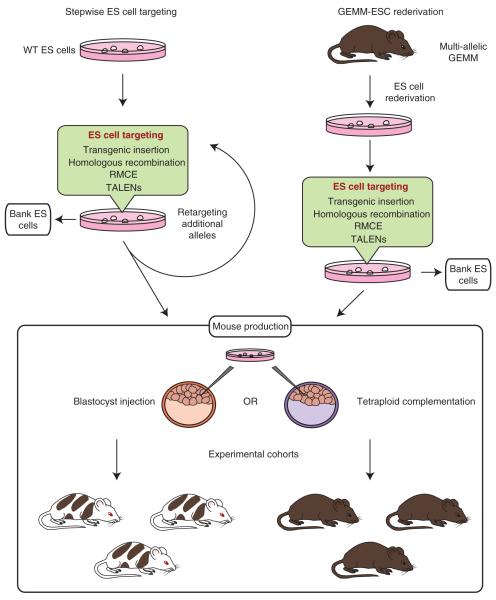FIGURE 3.
Nongermline GEMMs for rapid production of multiallelic experimental cohorts. Multiallelic ES cell lines harboring knockout alleles, inducible transgenes, and/or shRNAs can be generated from validated wild-type ES cell lines by multiple rounds of targeting and selection (left panel). Alternatively, ES cells can be rederived from multiallelic GEMMs of the desired genotype produced by conventional breeding (right panel). GEMM-derived ESCs can then be targeted in vitro by homologous recombination, RMCE, TALEN nucleases, or transgene insertion to insert additional genetic elements without the need for several additional rounds of breeding. After engineering by either method, ES cells can be banked or used to generate nongermline GEMMs (lower panel). Injection of ES cells into blastocysts produces chimeric mice that consist of a mixture of ES- and host-derived cells. Injection of multiple blastocysts enables the production of synchronous experimental cohorts. Tetraploid complementation, in which ES cells are injected into tetraploid blastocysts that can only contribute to extraembryonic tissues, may be used instead of blastocyst injection to generate entirely donor ES cell–derived experimental mice.

